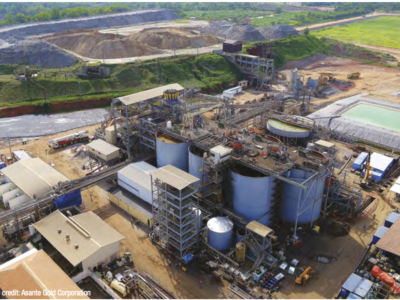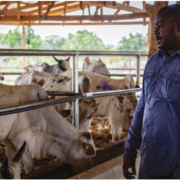Ghana is one of Africa’s most dynamic economies with a population in excess of 30 million. Demand for healthcare is thus a critical aspect
of the nation’s progress, with public and private institutions around the country working to meet this need. In 2023, the government voted GHS 15.2 bn for healthcare expenditure in the budget.
There is a network of close to 3,000 healthcare facilities distributed across the country. Furthermore, the phar- maceutical subsector has witnessed substantial growth, with a market size reaching almost half a billion, supported by a network of over 1,000 pharmacies and 30 pharmaceutical manufacturing companies. There are over 500 diagnos- tic centres and 337 ambulances in the country, with an ambulance-to-popula- tion ratio of 1:84,000.
The health insurance market in Ghana is diverse, with approximately 12 licensed private health insurance schemes, nota- bly featuring seven private commercial health schemes. This nuanced frame- work aims to enhance accessibility and affordability of healthcare services across the populace. Ghana pioneered the adoption of a universal health in- surance system, known as the National Health Insurance Scheme (NHIS), becoming one of the initial African na- tions to do so. This initiative aimed to enhance healthcare accessibility for all citizens, ensuring that essential medical services are within reach for everyone.
The medical devices and supplies sector is a vital component of healthcare provi- sion in the country, with a market size valued at US$ 71.2 million as of 2021. Notably, consumables command the largest share, amounting to $ 23.8 mil- lion, underscoring the significance of sustainable supply chains for essential medical resources.
There is a balance between expenditure and infrastructure, with a healthcare spend per capita of $ 75 in 2021. This investment is supported by a substantial network of public health facilities, num- bering at 11,079 as of 2022. However, challenges persist in terms of health- care personnel distribution, with only 0.10 doctors, 0.58 hospital beds, and 1.2 nurses per 1,000 population in 2020, highlighting the need for workforce augmentation to meet the demands of a growing populace.
Notably, the healthcare system operates on a mixed financing model, with pub- lic spend accounting for 42 percent and private spend comprising 58 percent of the total expenditure. Despite these intricacies, Ghana’s healthcare sector demonstrates resilience and commit- ment towards enhancing accessibility and quality of care for its citizens.
Healthcare provision in Ghana is organ- ised into primary, secondary, and tertia- ry care. The primary healthcare system involves health posts, clinics, and health centres and delivers essential healthcare services such as immunisation, malaria treatment, antenatal care, and infant and young child feeding. Secondary healthcare, on the other hand, addresses more specialised medical needs and is staffed by specialists in fields like cardi- ology, endocrinology, neurology, ENT, and general surgery. Patients referred from primary healthcare facilities typi- cally seek treatment here for conditions requiring advanced expertise. Tertiary healthcare represents the highest level of specialised care, predominantly focusing on in-patient services and em- ploying sophisticated equipment and expertise.
A number of factors are set to drive growth in Ghana’s healthcare sector. The rapid population growth in Ghana has spurred an increased demand for pharmaceutical products, driven by the prevalence of chronic illnesses. Con- ditions such as heart disease, stroke, diabetes, and cancer have become more common, leading to a surge in the phar- maceutical industry. To address this, both patented and generic drugs are continuously developed by companies to combat these diseases.
A significant governmental measure to bolster the local pharmaceutical sector involved banning the importation of 14 widely used products that could be locally manufactured, including am- picillin, tetracycline, and paracetamol. Moreover, domestically produced for- mulations benefit from a 10 percent import duty exemption on finished for- mulations. The generic drugs segment, offering relatively cheaper alternatives to patented drugs, holds the second-largest share of the pharmaceutical market in Ghana, propelled by government-driv- en cost containment measures.
To further support the industry’s devel- opment, the Ghana National Chamber of Pharmacy (GNCP) partnered with LMI Holdings Ltd to establish a phar- maceutical industrial park in Ghana’s Dawa industrial zone. Additionally, the GNCP has urged the government to facilitate access to affordable investment capital through interest payment subsi- dies and tax breaks for pharmaceutical industry stakeholders.
More than half of the healthcare ser- vices utilised by Ghanaian customers are provided by private providers, a trend that appears to be on the rise. Self-Financed Private (SFP) providers constitute the majority of these privately offered services. Regardless of financial status, geographical location, or gender, individuals opt for private providers for approximately half of their health- care needs. While coverage under the National Health Insurance Scheme (NHIS) encourages the use of Ghana Health Services (GHS) facilities over privately offered care, the inadequate accreditation of SFP providers may con- tribute to this trend.
Despite NHIS coverage, consumers continue to incur out-of-pocket ex- penses at GHS, Christian Health As- sociation of Ghana (CHAG), and SFP providers, although the frequency of paying nothing at all has increased due to NHIS coverage. However, the over- all amount of out-of-pocket spending remains unchanged in circumstances where it is still required. SFP providers are preferred for their quality services, customer service, and short wait times, while GHS providers are favoured for quality services, reasonable pricing, and doctor availability. CHAG providers are preferred for quality services, courteous service, and doctor availability.
SECTOR OPPORTUNITIES
• Opportunity to establish a World Health Organization certified pharma- ceutical manufacturing plant as none currently exist.
• Opportunities for active pharma- ceutical ingredient manufacturing.
• Establishment of a CAT lab in Ghana.
• Establishment of research and de- velopment facilities.
• Community care facilities for the elderly.
• Advancement in specialised cancer care treatments.
INVESTMENT INCENTIVES
• Investors have free transferability of capital, profits, and dividends and ben- efit from the World Bank’s Multilateral Investment Guarantee Agency Con- vention and Ghana’s Double Taxation Agreements (DTAs) to rationalise tax obligations of investors in order to pre- vent double taxation.
• Ghanaian consumers’ price sensi- tivity in healthcare presents opportuni- ties for new entrants to succeed through affordable pricing.
• Ghana imposes no explicit import restrictions or tariffs on used or refur- bished medical equipment.
• The Ministry of Finance grants exemptions from duties and taxes for most hospital equipment, including ambulances, as well as certain pharma- ceuticals, facilitating their accessibility and affordability within the country.
• The Ghana Investment Promo- tion Centre Act (2013 Act 865) and Free Zones Act (1965 Act 504) serve to promote economic development and regulate investor activities within the country, providing a framework for in- vestment facilitation and regulation.
• The proximity to European and American markets will significantly reduce travel time, streamlining supply chain management for both exports and imports
NHIS, a best-practice approach that has placed the country at the forefront of health financing reforms in Africa, covers 60 percent of the population and has a track re- cord of providing meaningful financial risk protection for beneficiaries, with benefits skewed towards the poor. Continued effectiveness of the scheme, which largely de- pends on revenue from the NHIL, will depend on sustained financing. However, Na- tional Health Insurance Authority (NHIA) financing has come under strain due to two gaps: (i) the difference between revenues raised under the NHIL and budget alloca- tions to the NHIS; and (ii) the difference between budget commitments and actual transfers to the NHIS. As a result, in 2022, the NHIS received just over 50 percent of revenues raised via the NHIL, leading to delays in claims reimbursement, the accumu- lation of arrears, and increased out-of-pocket payments by beneficiaries now being asked to pay for medicines and diagnostics that would previously have been covered.
Source: Ghana First Resilient Recovery Development Policy Financing. Produced by the World Bank Group. https://documents1.worldbank.org/curated/en/099122123140098673/pdf/BOSIB12746a5c- c0271aa221597ad685a122.pdf















Comments